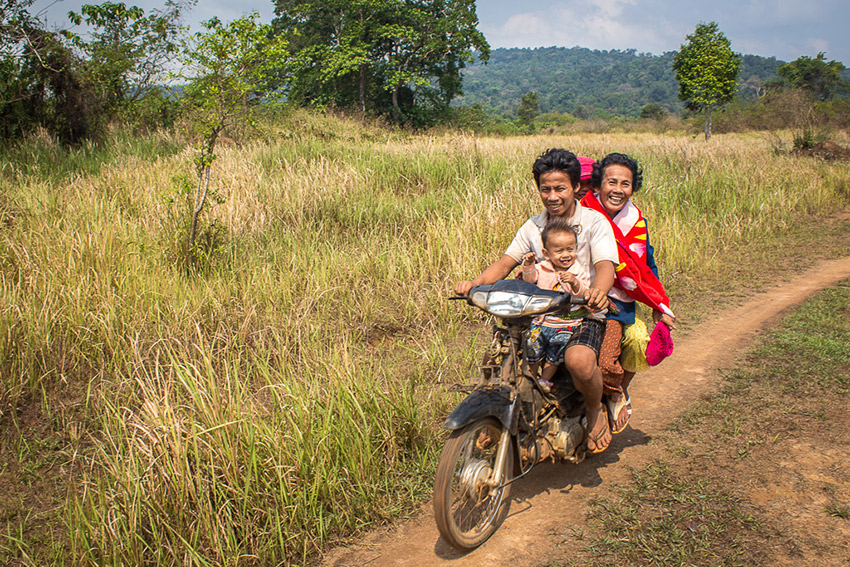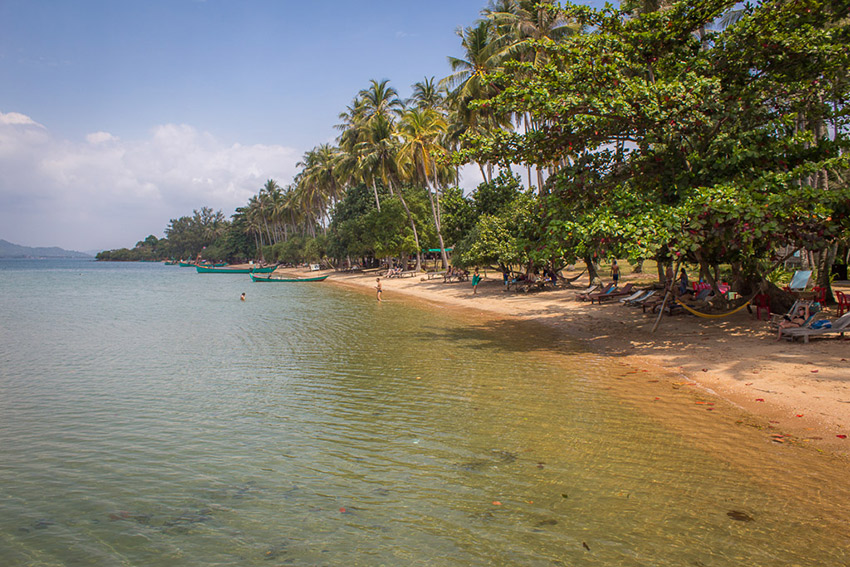The impression most people have of Cambodia is usually based on two cultures. The first is the Khmer Empire that spread across much of Asia in the 9th – 13th centuries and built the incredible temples at Angkor. The other is the Khmer Rouge, the murderous regime of Pol Pot that gripped the country in the 1970s, which repressed the entire nation and left up to 2 million people dead. Both still affect the country today, but neither should be looked at without also considering a third thing: modern Cambodia.
So what is modern Cambodia and what does it mean for the traveller who wants to explore this beautiful part of Southeast Asia? Well, that's the exciting bit.
Phnom Penh: contemporary metropolis
“Modern Cambodia” is perhaps a bit of a misnomer. It's probably more accurate to call it “contemporary Cambodia” because the country is still far behind some of its neighbours in terms of development. In the capital, Phnom Penh, for instance, you shouldn’t expect a booming metropolis like Bangkok or Kuala Lumpur. The city feels a bit more like a chaotic marketplace with traffic, vendors and dogs constantly mixing together.

Phnom Penh feels more like a chaotic marketplace than a metropolis. Photo courtesy Maya-Anaïs Y.
The main tourist area around the Mekong River and the Royal Palace has comfortable restaurants and bars, and it's a pleasant place to spend some time. Most visitors, though, are interested in the two best-known sites in Phnom Penh — the Killing Fields and the S-21 Prison (now the Tuol Sleng Genocide Museum). These are the legacy of the Khmer Rouge. The S-21 Prison was once a school that was turned into a torture chamber for perceived enemies of the state. A little bit out of town, the Killing Fields is where many of them were murdered before being dumped into holes in the ground. The brutal simplicity makes both sites confronting experiences for visitors, but seeing them in person helps give an essential insight into the terrors the people of this country faced less than 40 years ago.

Inside of the Tuol Sleng Genocide Museum.
Wat’s it all about?
These days, the city of Siem Reap is probably more popular with tourists than Phnom Penh is. It's the base from which to explore the temples of Angkor. The most famous of which is Angkor Wat, the largest religious monument in the world at 162 hectares (400 acres). Around it, within the rest of the ancient city of Angkor, there are about a thousand temples of various sizes. Many are small and in ruins, but it's easy to spend days exploring the larger ones hidden amongst the humid jungle that surrounds them all.

Monks stand watching Angkor Wat.
Siem Reap has grown in size dramatically in the past decade and is now a tourist city full of hotels and good quality restaurants and bars. It means the prices are a little higher than the rest of the country. However, Cambodia overall is an inexpensive place to visit. Local meals cost just a couple of dollars and, even in nicer restaurants, you can normally get lunch or dinner for about USD $5.00. The cheapest guesthouses start at about USD $5.00 and a budget (but good quality) hotel room can run about USD $20.00.
It makes sense when you know a bit about the economy of Cambodia. About a third of the population lives on less than a dollar a day. Although tourism is a growing industry, many people still make a living from farming — or even grow just enough to eat.
When you venture into the countryside, you start to see this for yourself. You’ll likely experience a warmth and friendliness from the local Cambodians in rural areas, but there's no way to avoid seeing the poverty. On a positive note, though, there's an increasing trend for ecotourism options in the countryside. These projects offer homestays or activities where local people from the town are involved in hospitality or guiding. It means the money spent by foreigners stays in the community, rather than going to large companies.

You'll find a warmth and a friendliness from the Cambodian people you meet.
Islands away
The beachside city of Sihanoukville has become popular. Don't forget that Cambodia has a fantastic coastline and there are lots of beach options if you're looking for some sun and sand to add into a holiday dominated by temples. Parts of Sihanoukville have become a magnet for the backpacker crowd, but there are some quieter parts to be explored. Those looking to avoid the young party crowd have other beach options on the coast, like Kep — a quiet coastal town surrounded by jungle and famous for the freshly caught crabs served in local restaurants.
From Kep, it's just a short ride by boat to Rabbit Island, one of Cambodia's (relatively) hidden gems. This small island has no Internet and very limited electrical power. With basic accommodation offered along the main beach, the island is pretty much otherwise deserted. It's a perfect escape for people looking for some peace and quiet.

Unwind on the shores of Rabbit Island.
So, an island with no power is certainly not “contemporary Cambodia,” but neither are temple complexes or museums that document human rights abuses. The Cambodia you'll find if you travel the country is a land of diversity complete with hectic cities, large tracts of jungle, scattered farming communities and peaceful paradises. Thousands of years of history and culture have not been forgotten, but nor do they completely define the country at the moment.
Getting There
G Adventures runs a number of departures in Cambodia encompassing a wide range of departure dates and activities to cater to different tastes. We’re thrilled at the prospect of showing you this big blue planet of ours — check out our small group trips here.























